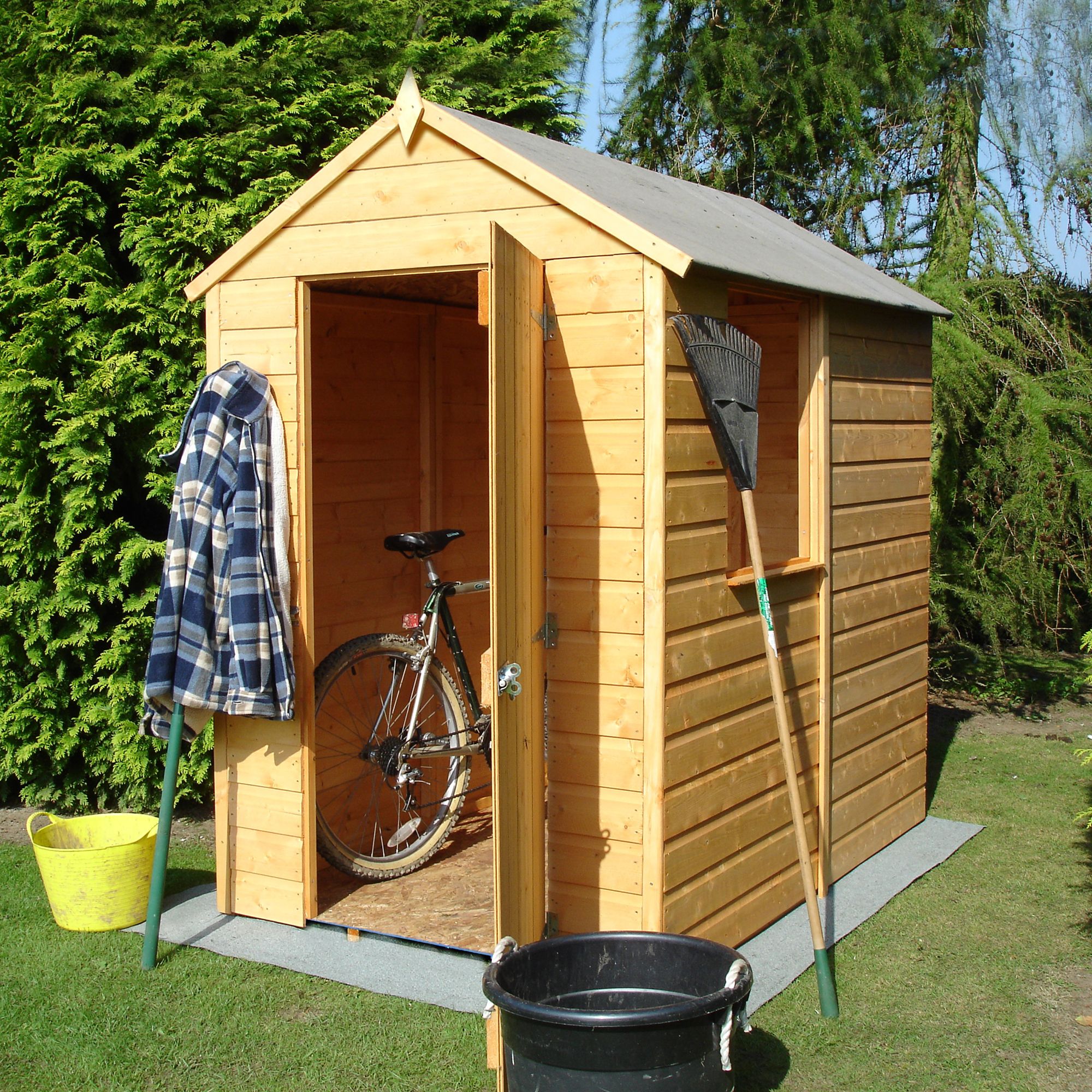Imagine yourself relaxing in your newly built shed, surrounded by your tools, hobbies, or even enjoying a quiet moment with a good book. You’ve poured your heart and soul into the project, but one crucial question remains: Can you use OSB for the floor? Choosing the right material is a crucial step in ensuring your shed is sturdy, durable, and safe.

Image: www.diy.com
This guide is your comprehensive resource to determine if OSB is the right choice for your shed floor. We’ll dive deep into the pros and cons, explore alternative options, and ultimately empower you to make a well-informed decision for your project.
What is OSB?
OSB, or Oriented Strand Board, is a type of engineered wood panel made from wood strands glued together and compressed under heat and pressure. The strands are arranged in different directions, giving OSB its strength and stability. Originally developed as an alternative to plywood, OSB is widely used in construction, particularly for subfloors, sheathing, and roof decking.
OSB for Your Shed Floor: The Pros and Cons
Like any building material, OSB for shed floors comes with its own set of advantages and disadvantages:
Pros:
- Cost-effective: OSB is generally more affordable than plywood, making it a budget-friendly option for shed construction.
- Strength & Stability: OSB’s engineered construction provides good structural integrity, resisting bending and sagging under load.
- Easy to Work With: OSB is easy to cut and install, making it user-friendly for DIY projects.
- Moisture Resistance: Modern OSB products include treatments that offer varying levels of moisture resistance, suitable for outdoor applications.
Cons:
- Susceptible to Damage: OSB is less impact-resistant than plywood, prone to dents and scratches.
- Moisture Sensitivity: Although treated, OSB can be affected by prolonged exposure to moisture, potentially warping or delaminating.
- Formaldehyde Emissions: Some OSB products may release formaldehyde, a volatile organic compound that can be harmful to health, especially in enclosed spaces. While many OSB manufacturers offer low-formaldehyde options, it’s essential to check the product specifications and select a suitable grade.
Is OSB Right for You?
So, should you use OSB for your shed floor? The answer depends on several factors, including:
- Shed Usage: Consider how you plan to use your shed. If you’ll store heavy items or have significant foot traffic, a stronger material may be a better choice.
- Environmental Conditions: The climate and weather conditions will influence your decision. If you live in a humid or rainy region, consider options more resistant to moisture damage.
- Budget: OSB is a cost-effective option, but its advantages should be weighed against the potential for longer-term repairs or replacements due to damage or moisture sensitivity.
- Personal Preferences: Ultimately, your own preferences for working with certain materials will influence your choice. If you value ease of use and a more affordable option, OSB could be suitable.

Image: elsiekio.blogspot.ca
Alternatives to OSB:
If you’re concerned about the drawbacks of OSB, several other materials can provide sturdy, durable shed floors:
- Plywood: Plywood is generally more resistant to moisture and impact than OSB. However, it comes at a higher price.
- Treated Lumber: Pressure-treated lumber, especially Southern Pine, is very durable and resists rot and insects. But it requires proper installation and can be more expensive than OSB.
- Concrete: Concrete is incredibly durable and resistant to moisture and pests. However, it’s expensive to install and requires specialized skills.
The Importance of a Strong Foundation
No matter what material you choose for your shed floor, ensure a solid foundation is crucial. A robust base will distribute the weight of your shed evenly, preventing settling and damage.
Foundation Options:
- Concrete Slab: This option is the most durable and can handle heavy loads.
- Pier Blocks: A less expensive option, but requires careful leveling and placement.
- Concrete Footings: A more common choice, footings are poured concrete pads that spread the weight of the shed.
Expert Insights: Shed Floor Construction
From the Expert: “The foundation is the anchor of your shed. A poorly constructed base will compromise the entire structure, no matter the strength of your floor material,” says Bob, a seasoned carpenter with over 30 years of experience. “Focus on building a solid foundation first, then choose your flooring material based on your specific needs and budget.”
Practical Tips for Success
Here are some valuable tips to ensure your shed floor is sturdy and long-lasting:
- Use a Moisture Barrier: A moisture barrier, such as a 6-mil plastic sheet, will help prevent moisture from damaging your floor.
- Ventilate Properly: Ensure adequate ventilation under your shed floor to prevent moisture buildup, which can lead to mold and rot.
- Maintain a Level Platform: Leveling your floor during installation is vital, ensuring the shed stand steady and safe.
- Consider a Subfloor: A subfloor made of plywood or treated lumber can provide extra strength and stability, especially if you plan to use heavy-duty flooring on top.
Can I Use Osb For Shed Floor
Conclusion: Making the Right Choice
Choosing the right material for your shed floor is a crucial decision. While OSB offers cost-effectiveness and ease of use, understanding its limitations and exploring alternative options is essential. Always prioritize a strong foundation, proper ventilation, and moisture protection for a long-lasting shed floor. By weighing these factors and seeking professional advice when needed, you can confidently build a sturdy, reliable, and enjoyable space to store your belongings or pursue your passions.






